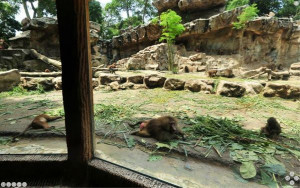Singapore Zoo Hamadryas Baboons Virtual Reality Image

In the remote parts of Ethiopia are populations that seem completely cut off from the modern world. They farm, fish and harvest everything that is needed to sustain life from Mother Earth. Independent and resilient, some of these natives have learned to survive in extremely harsh conditions, such as the Afar areas where temperatures often soar above 50 degrees Celsius. As you journey through Hamadryas Baboons - The Great Rift Valley Of Ethiopia, you will begin to appreciate the often misunderstood Ethiopia - her beautiful people, dramatic landscapes, dazzling variety of wildlife and plant life, and fascinating history.
The Singapore Zoo occupies 28 hectares (0.28 km²) of land on the margins of Upper Seletar Reservoir within Singapore's heavily forested central catchment area. The zoo was built at a cost of S$9m granted by the government of Singapore and opened on 23 June 1973. It is operated by Wildlife Reserves Singapore, who also manage the neighbouring Night Safari and the Jurong BirdPark. There are about 315 species of animal in the zoo, of which some 16% are considered threatened species. The zoo attracts about 1.4 million visitors a year.
The Singapore Zoo followed the modern trend of displaying animals in naturalistic, 'open' exhibits, i.e. with hidden barriers, behind moats and shrubbery etc. It also houses the largest captive colony of orangutans in the world.
















